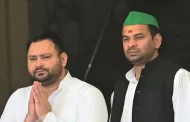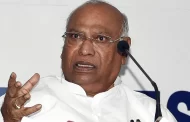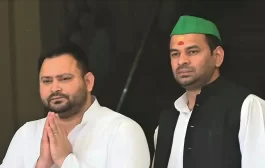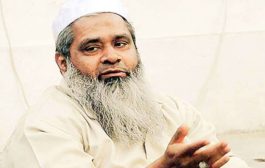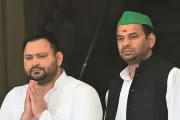Unlike Bihar, in Jharkhand, there are many layers. There is rural-urban-divide, a fear of being attacked if they speak against BJP and then there’s corruption, land acquisition and land tenancy act

As you hover over Ranchi, the brown starkness of terra-firma snares you. You can see the kachcha roads, water-parched land and few pucca houses. You enter the city believing these will be some of the election narratives, but then as you step out of the airport you are in for a rude shock.
Several auto-drivers and cabbies will tell you, “Ranchi has no issues. There are roads everywhere. The poor have got houses, water and jobs. That is all they want. The BJP government has done all of this.” And you wonder where all of these things are. And as you probe, you realise there is more than what meets the eye.
In Jharkhand, unlike in Bihar where political opinions are voiced loudly, there are many layers. There’s the much evident rural-urban-divide, then a fear of being attacked or cases slapped if they speak against BJP and then there’s corruption, land acquisition, the land tenancy act. And there’s more if you listen to the silences.
The issues
“Hunger, fear and corruption are the main issues. In towns, people may have a job, but in several of the villages, most men and women have no source of income. Of the 24 districts in the state, lack of jobs is an issue in at least 18 of them. Men and women have to move around looking for work. Even farming in several districts have come to a standstill. The government, despite all its promises, have not been able to build an irrigation network. So, if there is no work, no farming, how will they raise their children? The poor hardly get any ration from the PDS; that is also being pilfered. Then the government’s insistence on Aadhaar has ensured several won’t get their ration. A number of people in the villages don’t even have an Aadhaar card. Even if they have one, the biometric hardly functions,” said senior journalist Devender.
Listing out more issues, he said there is an acute water shortage, which no one is talking about. “Even in towns, water comes only once in a while. There are no water storage facilities. The government built several water-harvesting units, but the construction was so bad that they fell apart or the water simply evaporated in a few days. Even education is in a state of shambles. The temporary teachers have been on a strike demanding regularisation and an increase in their pay,” explains Devender.
All the 24 districts have some sort of Naxal presence. “There is fear among the villages that if they don’t help the Naxal, they will not be allowed to live in the village, but if they help the Naxals, the police intimidate them. Union Minister Rajnath Singh said that they will remove Naxals by 2023, but the more such announcements are made, the more the Naxals seem to be growing in the state,” said another poll watcher in Ranchi.
In most towns, many favour the BJP, but as soon as your travel out, the sentiment vanishes. In fact, it gives rise to anger. “In the cities there are many people who have come from Uttar Pradesh, Bihar, Bengal – many of them prefer status quo. Many of these BJP supporters are extremely aggressive, so several people give their responses depending on whom they are speaking to,” pointed out former journalist Ashok Verma.
But, where are these issues being discussed, asks Sushil, who works in a local eatery in Ranchi. “Why is there no mention of land rights, what about the tribals? What about the lynchings?” he questions.
BJP is only raising nationalism. “Where is the ‘vikas ka mudda’ that they had in 2014,” questions Devender.
What most people agree is that there is an undercurrent against the Modi-led BJP government. “There is a disgruntlement about several government employees regarding this government. They used to be Modi supporters, but after what they have seen happen to BSNL, they are a worried lot. Most banking employees are now up in arms against this government, PSU workers, including those of SAIL, which has units all across Jharkhand, are worried if SAIL will get privatised. Then there is worry if Coal India will be sold to Adani. And these are genuine fears,” points Faisal Anurag, human rights activist and former journalist.
There is palpable anger amongst the tribals, smaller OBC groups such as Kumhars, Kahars, Badhais, Luhar, Dhamuk etc, Muslims and Christians against the present ruling dispensation. Of the 17 lynching incidents, there were 11 deaths. Of these, nine were of Muslims and two tribals. All of them are likely to vote against BJP and in favour of the alliance candidate who is in a position to defeat BJP.
What is visible this election is a leadership gap across the aisle – whether the grand alliance or BJP. There are no state leader-driven campaigns. BJP has been focusing on Modi as there is considerable anger against the BJP’s Raghubar Das government in the state.
The Poll math
Jharkhand goes to polls in four phases – April 29, May 5, May 12 and May 19. There are 14 Lok Sabha seats here, of which five are reserved for Scheduled Tribes (ST) and one for Schedule Castes (SCs). According to the 2011 census, STs constitute 26.3%, SCs 12.08%, Muslims 15% and Christians 4.3% of the total population.
The major parties in the fray are Congress, Jharkhand Mukti Morcha (JMM), Jharkhand Vikas Morcha (JVM), and Rashtriya Janata Dal – all of whom are part of the Grand Alliance. However, in the BJP-led NDA, there’s only the saffron party and All Jharkhand Students Union (AJSU) party, which will contest only from one seat Giridih.
Currently, out of 14 Lok Sabha seats, 12 are represented by BJP and the remaining two by the Jharkhand Mukti Morcha led by Shibu Soren. However, in grand alliance, Congress will contest from seven seats, JMM five seats, JVM 2 seats and RJD one.
According to Mahagathbandhan seat-sharing pact, the Congress will contest in the following constituencies: Ranchi, Khunti, Lohardaga, West Singhbhum, Hazaribag, Chatra, and Dhanbad. JMM will contest in Dumka, Rajmahal, Giridih, and Jamshedpur. JVM(P) got Koderma and Godda and RJD got Palamu. But, despite this arrangement, both Congress and RJD candidates are contesting from Chatra. Additionally, there is disgruntlement that the Congress hasn’t chosen the best candidate in a few of the seats, giving the BJP a chance at the fight.
Notwithstanding such issues, the grand alliance is will win a higher number of seats this time. “The only seats sure for the BJP this time are Hazaribagh, from where Yashwant Sinha’s son Jayant Sinha is contesting, Khunti and Jamshedpur. All the others are up for grabs by the grand alliance,” points out Anurag. What could be relatively easier to win are Ranchi, Lohardaga, Singhbhum, Giridih, Dumka, Rajmahal and Palamu.
In Ranchi, there is a triangular contest between the incumbent MP Ram Tahal Choudhary, who was not given a seat by BJP, hence is contesting as an independent, BJP’s Sanjay Seth, whom no one knows, and Subodh Kant Sahay of the Congress. Sahay is a politician who rose from the JP movement of the 70s.
In Kodarma, the first chief minister of Jharkhand Babulal Marandi of JVM is hoping to win, but against him is Annapurna Devi Yadav, who switched from RJD to BJP just before elections. The dark horse here is mass leader and CPI(ML) candidate Rajkumar Yadav, who had earlier defeated Marandi.
Khunti is also the setting of an interesting battle between tribal leader Arjun Munda of the BJP and Congress’ Kali Charan Munda. Arjun Munda was a former JMM leader and was also the Chief Minister of the state. The Congress took a while before deciding on Kali Charan, who is the elder brother of Neelkanth Singh Munda is a BJP leader and cabinet minister in Raghubar Das government.
The constituency, which is a ST Lok Sabha seat, has become one of the Jharkhand’s high-profile parliamentary constituencies after the BJP fielded Arjun Munda by dropping its eight-term sitting MP Karia Munda. Khunti is also where the Pathalgadi movement began last year.
source: NH



